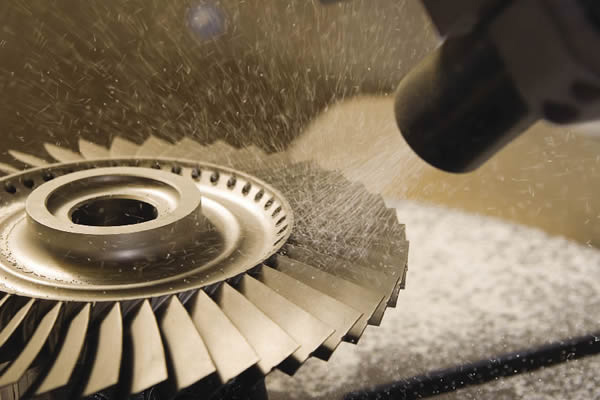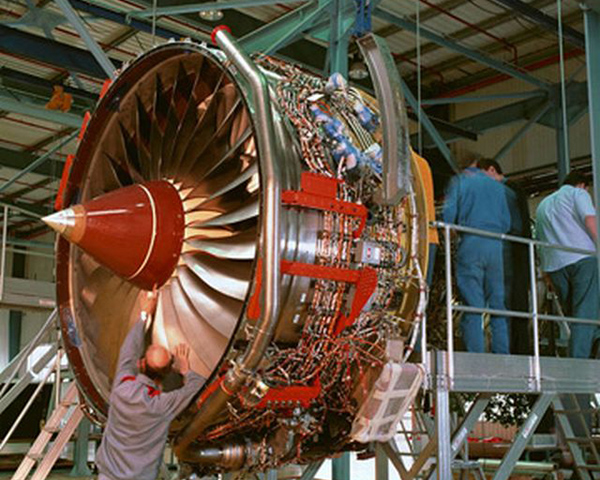An explanation of the shot-peening process which is used today by contemporary architects and designers and yet which has been around since mediaeval times. We give a simple account of the process.
Shot peening is a cold working process which can trace its roots to the methods blacksmiths practiced in medieval times. The surface which requires shot peening is bombarded by small round media called shot which are creating the same kind of impact as the blacksmith’s hammer. In the same way, the shot strikes the surface leaving behind a small indentation or dimple. In order for a dimple to appear, the surface layer must give way in tension.

A component being shot peened
The compressed material tries to restore the original shape which produces a layer of cold worked metal that is ‘highly stressed’ where it has been struck. As the peening continues, overlapping then creates a uniform layer of what is known as “residual compressive stress”. The benefit of peening is that cracks will not occur in a compressively stressed area.
The shot used for peening can be steel, stainless steel, glass or ceramic.
Metal that has had a hard life and been subjected to grinding, milling, bending or heat treatment will be suffering, if you like, from tensile residual stress. This stress if left unchecked will cause parts to wear out. Shot Peening converts tensile residual stress into compressive residual stress which means the parts can last longer and be able to cope with maximum load capacities.
There are two types of machines used for shot peening. One uses a bladed wheel rotating at high speed is fed with peening shot. The machine sprays this shot onto the work by the blades’ movement referred to as ‘slinging’.
The second type of machine blasts pressurised air to propel the shot onto the metal.
The wheel is efficient as it causes a hailstorm of high speed shot and thus the peening time is quicker and the desired result (arc height) is effective. Due to the high speed and great volume of shot being slung around, the work which is being peened must be placed in a type of cabinet. The downside is that wear on the impeller blades and walls inside the cabinet or container are rather a lot. Containing the peening in a cabinet, means there is a limit to the part size that can be treated by peening.
Large wheel type machines are an expensive outlay but where there is sufficient production of the same types of items they are very useful and in the long run they are generally cheapest for large volumes of peening. The air blast machines can be different in the way they suck up shot or use pressurised air to get to work on the peening. The blasting action may affect the way shot get pushed through the air stream. Such machines are often a cabinet, although a sealed room is also used. The air blast machine has a nozzle that can be directed for closer more accurate work. This type of control cannot be achieved in a wheel bladed machine. If you want to shot peen, for instance up to 50 parts only, the air blast types are cheaper than using the wheel types.
Shot peening has similar properties to sandblasting, however the difference is it doesn’t use an abrasive force. Less is removed by the process than blasting, and less dust thrown off. The important point of shot peening is that it changes the mechanical properties of the material, that is making the stresses more favourable.
Shot peening is often needed for aircraft repairs to relieve tensile stresses built up in the grinding process and replace them with beneficial compressive stresses. Depending on the part and the shot material and quality used as well as the intensity and coverage in the application, shot peening can increase fatigue life up to 1000%.
A study done through the SAE Fatigue Design and Evaluation Committee showed what shot peening can do for welds compared to welds that didn’t have this process done. The study claimed that the regular welds would fail after 250,000 cycles however this compared to welds that had been shot peened that would fail after an astounding 2.5 million cycles. This is one of the big reasons that shot peening is a popular operation with aerospace parts.

Jet engine for Beoing airbus with shot peened components